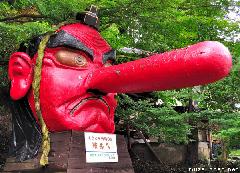During the Muromachi period (1336-1573), the Zen Buddhist monks invented a new and unique garden style, the Karesansui gardens, known today as Japanese rock gardens, dry landscape gardens or Japanese Zen gardens.
Unlike the typical, large Japanese gardens, with ponds and alleys, the Karesansui gardens are small, designed to be viewed at a glance.
A Japanese Zen garden is a place for meditation and relaxation, where you can understand what peace truly means. It can be interpreted as an allegorical model, with sand representing oceans, rocks representing islands and moss representing forests. And all these elements have other, subtler meanings too…
One of the most beautiful Zen gardens I visited in Japan, the Isshidan garden, is located inside the Ryogen-in Temple in Kyoto. The rocks on the far left represent Horai-san, a mystical land from in Chinese mythology, while the two rocks on the right represent the Tsuru-jima, “Crane island” (the crane is a symbol of longevity in the Japanese tradition). Finally the rocks in the middle, surrounded by moss, are the Kame-jima, “Turtle island", also a traditional symbol of longevity.
EXIF Info:
|
Yesterday’s Japan Photo:Old Japanese Stories, Mount Kurama Tengu |



